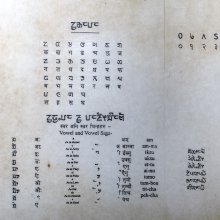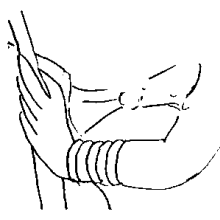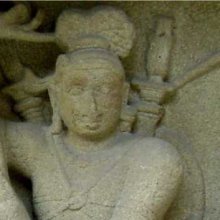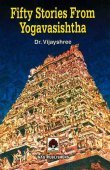Kirata, Kirāta, Kirāṭa: 34 definitions
Introduction:
Kirata means something in Buddhism, Pali, Hinduism, Sanskrit, Jainism, Prakrit, the history of ancient India, Marathi, Hindi, biology. If you want to know the exact meaning, history, etymology or English translation of this term then check out the descriptions on this page. Add your comment or reference to a book if you want to contribute to this summary article.
Images (photo gallery)
In Hinduism
Vaishnavism (Vaishava dharma)
Source: ISKCON Press: GlossaryKirāta (किरात).—A mountainous region near modern Udaipur, Rajasthan, where Arjuna did penance. Lord Śiva took the form of a Kirāta and fought with Arjuna.

Vaishnava (वैष्णव, vaiṣṇava) or vaishnavism (vaiṣṇavism) represents a tradition of Hinduism worshipping Vishnu as the supreme Lord. Similar to the Shaktism and Shaivism traditions, Vaishnavism also developed as an individual movement, famous for its exposition of the dashavatara (‘ten avatars of Vishnu’).
Purana and Itihasa (epic history)
Source: Wisdom Library: Skanda-puranaKirāta (किरात) is the name of a gaṇa (attendant of Śiva), mentioned in the Skandapurāṇa 4.2.53. In this chapter, Śiva (Giriśa) summons his attendants (gaṇas) and ask them to venture towards the city Vārāṇasī (Kāśī) in order to find out what the yoginīs, the sun-god, Vidhi (Brahmā) were doing there.
While the gaṇas such as Kirāta were staying at Kāśī, they were desirous but unable of finding a weakness in king Divodaśa who was ruling there. Kāśī is described as a fascinating place beyond the range of Giriśa’s vision, and as a place where yoginīs become ayoginīs, after having come in contact with it. Kāśī is described as having both the power to destroy great delusion, as well as creating it.
The Skandapurāṇa narrates the details and legends surrounding numerous holy pilgrimages (tīrtha-māhātmya) throughout India. It is the largest Mahāpurāṇa composed of over 81,000 metrical verses, with the core text dating from the before the 4th-century CE.
Source: archive.org: Puranic EncyclopediaKirāta (किरात).—An urban region in ancient India. (Bhīṣma Parva, Chapter 2, Verse 51).
Source: Cologne Digital Sanskrit Dictionaries: The Purana Index1a) Kirāta (किरात).—The story of.*
- * Brahmāṇḍa-purāṇa IV. 7. 13; 8. 9.
1b) People of an eastern kingdom; a mountain kingdom; defeated by Bharata and purified of sin by the worship of Hari;1 vanquished by Kalki;2 a hill tribe.3 Defeated by Sagara, took caves and hills as residences;4 reside on the east of Bhāratavarṣa;5 co-habitation with Kirāta women by a Brāhmaṇa; purification at the end of the twelfth day—rites cited.6
- 1) Bhāgavata-purāṇa IX. 20. 30; II. 4. 18; Brahmāṇḍa-purāṇa II. 16. 12 and 51, 60. 68; Matsya-purāṇa 114. 56; 121. 49; Vāyu-purāṇa 45. 82; 120. 136; 47-48; 58. 83.
- 2) Brahmāṇḍa-purāṇa II. 18. 50; III. 73. 109; IV. 29. 131 and 135; Vāyu-purāṇa 98. 108.
- 3) Brahmāṇḍa-purāṇa II. 16. 68; III. 48-49; IV. 7. 19; Matsya-purāṇa 114. 11 and 35.
- 4) Brahmāṇḍa-purāṇa III. 48. 23-49.
- 5) Viṣṇu-purāṇa II. 3. 8.
- 6) Brahmāṇḍa-purāṇa IV. 8. 9.
Kirāta (किरात) is a name mentioned in the Mahābhārata (cf. II.13.19, II.27.13, II.48.8, II.48.10, III.48.20, III.174.11, V.19.15, VI.10.49, VI.10.55, VI.10.67, VI.20.13, VI.46.46, VIII.4.15, VIII.51.19) and represents one of the many proper names used for people and places. Note: The Mahābhārata (mentioning Kirāta) is a Sanskrit epic poem consisting of 100,000 ślokas (metrical verses) and is over 2000 years old.

The Purana (पुराण, purāṇas) refers to Sanskrit literature preserving ancient India’s vast cultural history, including historical legends, religious ceremonies, various arts and sciences. The eighteen mahapuranas total over 400,000 shlokas (metrical couplets) and date to at least several centuries BCE.
Shaivism (Shaiva philosophy)
Source: Wisdom Library: ŚaivismKirāta (किरात) is the Sanskrit name of a deity presiding over Kailāsācala, one of the sixty-eight places hosting a svāyambhuvaliṅga, which is one of the most sacred of liṅgas according to the Śaivāgamas. The list of sixty-eight svāyambhuvaliṅgas and presiding deities (e.g., Kirāta) is found in the commentary on the Jirṇoddhāra-daśaka by Nigamajñānadeva. The word liṅga refers to a symbol used in the worship of Śiva and is used thoughout Śaiva literature, such as the sacred Āgamas.

Shaiva (शैव, śaiva) or Shaivism (śaivism) represents a tradition of Hinduism worshiping Shiva as the supreme being. Closely related to Shaktism, Shaiva literature includes a range of scriptures, including Tantras, while the root of this tradition may be traced back to the ancient Vedas.
Kavya (poetry)
Source: Wisdom Library: KavyaKirāta refers to an ancient district or cultural territory, as mentioned in the 7th-century Mudrārākṣasa written by Viśākhadeva. Kīra corresponds to the Himalayas in the north-east.
Source: WikiPedia: Sanskrit literatureKirāta (किरात) is a generic term in Sanskrit literature for people who lived in the mountains, particularly in the Himalayas and North-East India and who are believed to have been Mongoloid in origin. They are mentioned along with Cīnas (Chinese), and were different from the Niśādas.

Kavya (काव्य, kavya) refers to Sanskrit poetry, a popular ancient Indian tradition of literature. There have been many Sanskrit poets over the ages, hailing from ancient India and beyond. This topic includes mahakavya, or ‘epic poetry’ and natya, or ‘dramatic poetry’.
Natyashastra (theatrics and dramaturgy)
Source: Wisdom Library: Nāṭya-śāstraKirāta (किरात) is the name of a tribe, usually to be represented by a brown (asita) color when painting the limbs (aṅgaracanā), according to Nāṭyaśāstra chapter 23. The painting is a component of nepathya (costumes and make-up) and is to be done in accordance with the science of āhāryābhinaya (extraneous representation).

Natyashastra (नाट्यशास्त्र, nāṭyaśāstra) refers to both the ancient Indian tradition (shastra) of performing arts, (natya—theatrics, drama, dance, music), as well as the name of a Sanskrit work dealing with these subjects. It also teaches the rules for composing Dramatic plays (nataka), construction and performance of Theater, and Poetic works (kavya).
Shilpashastra (iconography)
Source: Shodhganga: Iconographical representations of Śiva (shilpa)Kirāta (किरात) or Kirātamūrti refers to one of the twenty-eighth forms (mūrti) of Śiva mentioned in the Vātulāgama: twenty-eighth among the Siddhāntaśaivāgama. The forms of Śiva (e.g., Kirāta) are established through a process known as Sādākhya, described as a five-fold process of creation.

Shilpashastra (शिल्पशास्त्र, śilpaśāstra) represents the ancient Indian science (shastra) of creative arts (shilpa) such as sculpture, iconography and painting. Closely related to Vastushastra (architecture), they often share the same literature.
Shaktism (Shakta philosophy)
Source: Google Books: ManthanabhairavatantramKirāta (किरात) is the name of a saṃdoha (meeting place) [or upasaṃdoha—secondary meeting place?), according to the Śrīmatottara-tantra verse 3.135-138, an expansion of the Kubjikāmatatantra: the earliest popular and most authoritative Tantra of the Kubjikā cult.—The first saṃdoha of the Yoginīs was emanated near to Śrīgiri and the second near the town of Ujjayinī. The others are Trikūṭa, Tripura, Gopura, Bhadrakarṇa ([Manuscript] Kh: Bhadrakaṣṭa; [Manuscript] G: Bhadrakīrṇa), Kirāta, the region of Kaśmīra, Sauvala (kh: Sauvara, g: Śaivāla) and Sindhudeśa.

Shakta (शाक्त, śākta) or Shaktism (śāktism) represents a tradition of Hinduism where the Goddess (Devi) is revered and worshipped. Shakta literature includes a range of scriptures, including various Agamas and Tantras, although its roots may be traced back to the Vedas.
Jyotisha (astronomy and astrology)
Source: Wisdom Library: Brihat Samhita by Varahamihira1) Kirāta (किरात) refers to a country belonging to “Nairṛtī (south-western division)” classified under the constellations of Svāti, Viśākhā and Anurādhā, according to the system of Kūrmavibhāga, according to the Bṛhatsaṃhitā (chapter 14), an encyclopedic Sanskrit work written by Varāhamihira mainly focusing on the science of ancient Indian astronomy astronomy (Jyotiṣa).—Accordingly, “The countries of the Earth beginning from the centre of Bhāratavarṣa and going round the east, south-east, south, etc., are divided into 9 divisions corresponding to the 27 lunar asterisms at the rate of 3 for each division and beginning from Kṛttikā. The constellations of Svāti, Viśākhā and Anurādhā represent the south-western division consisting of [i.e., Kirāta] [...]”.
2) Kirāta (किरात) also refers to a country belonging to “Aiśānī (north-eastern division)” classified under the constellations of Revatī, Aśvinī and Bharaṇī, according to the system of Kūrmavibhāga.

Jyotisha (ज्योतिष, jyotiṣa or jyotish) refers to ‘astronomy’ or “Vedic astrology” and represents the fifth of the six Vedangas (additional sciences to be studied along with the Vedas). Jyotisha concerns itself with the study and prediction of the movements of celestial bodies, in order to calculate the auspicious time for rituals and ceremonies.
General definition (in Hinduism)
Source: archive.org: Indian Historical Quarterly Vol. 7Kirāta (किरात) is the name of a country (possibly identified with hill tribes of the Himalayan zone), classified as both Hādi and Kādi (both types of Tantrik division), according to the 13th century Sammoha-tantra (fol. 7).—There are ample evidences to prove that the zone of heterodox Tantras went far beyond the natural limits of India. [...] The zones in the Sammoha-tantra [viz., Kirāta] are here fixed according to two different Tantrik modes, known as Kādi and Hādi.
Source: WikiPedia: HinduismKirāta (किरात): Huntsman, The non-Aryan aborigines of the land. They are mentioned along with Cinas for Chinese. Kiratas are believed to be of Tibeto-Burman origin.
In Buddhism
Theravada (major branch of Buddhism)
Source: Pali Kanon: Pali Proper NamesProbably the name given to a tribe of jungle men. Their language is classed with those of the Ottas, the Andhakas, the Yonakas and the Damilas, as a language of the Milakkhas (non Aryans). E.g., DA.i.176; VibhA.388; see also Zimmer: Altind. Leben 34.
Theravāda is a major branch of Buddhism having the the Pali canon (tipitaka) as their canonical literature, which includes the vinaya-pitaka (monastic rules), the sutta-pitaka (Buddhist sermons) and the abhidhamma-pitaka (philosophy and psychology).
In Jainism
General definition (in Jainism)
Source: archive.org: Trisastisalakapurusacaritra1) Kirāta (किरात) refers to a group of Mlecchas, as mentioned in chapter 1.4 [ādīśvara-caritra] of Hemacandra’s 11th century Triṣaṣṭiśalākāpuruṣacaritra: an ancient Sanskrit epic poem narrating the history and legends of sixty-three illustrious persons in Jainism.
Accordingly: “[...] After traversing the cave fifty yojanas long, the King started to conquer the north half of Bharatavarṣa. There dwell Kirātas, named Āpātas, arrogant, rich, powerful, fiery, like demons on earth. They have unlimited mansions, couches, seats, and vehicles, much gold and silver, like relatives of Kubera. [...] The Kirātas became extremely angry when they saw Bharata who had come, making a sun with crores of rays in the sky, as it were, by the rays from the golden armor, axes, and darts; providing the sky with teeth by upraised staves, bows, and hammers; [...] The lords of the Kirātas wore armor, indivisible as if made of tortoise-shell. They put on their heads helmets covered with the hair of bears, etc., giving the appearance of Rākṣasa-heads with hair standing up”.
2) Kirāta (किरात) refers to a sub-division of the Mlecchas: one of the two-fold division of men born in Mānuṣottara and in the Antaradvīpas, situated in the “middle world” (madhyaloka), according to chapter 2.3.—Accordingly, “In these 35 zones on this side of Mānuṣottara and in the Antaradvīpas, men arise by birth; on the mountains, Meru, etc., by kidnapping and power of learning, in the 2½ continents and in 2 oceans. [...]. From the division into Āryas and Mlecchas they are two-fold. [...] The Mlecchas—[e.g., the Kirātas, ...] and other non-Āryas also are people who do not know even the word ‘dharma’”.

Jainism is an Indian religion of Dharma whose doctrine revolves around harmlessness (ahimsa) towards every living being. The two major branches (Digambara and Svetambara) of Jainism stimulate self-control (or, shramana, ‘self-reliance’) and spiritual development through a path of peace for the soul to progess to the ultimate goal.
India history and geography
Source: Singhi Jain Series: Ratnaprabha-suri’s Kuvalayamala-katha (history)Kirāta (किरात) refers to an ancient country, kingdom or tribe of people, according to the 8th-century Kuvalayamālā written by Uddyotanasūri, a Prakrit Campū (similar to Kāvya poetry) narrating the love-story between Prince Candrāpīḍa and the Apsaras Kādambarī.—The Kuvalayamala (779 A.D.) is full of cultural material which gains in value because of the firm date of its composition. [...] On page 2.9 occurs a list of peoples in a country in which persons are born: [i.e., Kirāta] [...]

The history of India traces the identification of countries, villages, towns and other regions of India, as well as mythology, zoology, royal dynasties, rulers, tribes, local festivities and traditions and regional languages. Ancient India enjoyed religious freedom and encourages the path of Dharma, a concept common to Buddhism, Hinduism, and Jainism.
Biology (plants and animals)
Source: Wisdom Library: Local Names of Plants and DrugsKirata [ಕಿರಾತ] in the Kannada language is the name of a plant identified with Swertia chirayita (Roxb.) H. Karst. from the Gentianaceae (Gentian) family having the following synonyms: Swertia chirata, Ophelia chirata. For the possible medicinal usage of kirata, you can check this page for potential sources and references, although be aware that any some or none of the side-effects may not be mentioned here, wether they be harmful or beneficial to health.
Source: Google Books: CRC World Dictionary (Regional names)1) Kirata in India is the name of a plant defined with Andrographis paniculata in various botanical sources. This page contains potential references in Ayurveda, modern medicine, and other folk traditions or local practices It has the synonym Justicia paniculata N.L. Burman (among others).
2) Kirata is also identified with Andrographis serpyllifolia.
3) Kirata is also identified with Swertia chirayita It has the synonym Ophelia chirata Wall. (etc.).
Example references for further research on medicinal uses or toxicity (see latin names for full list):
· Planta Medica (1991)
· Journal of Ethnopharmacology (2003)
· Contributions from the United States National Herbarium (1895)
· Ethnobotanical Leaflets (2008)
· Natural Product Research (2005)
· Cytologia (1983)
If you are looking for specific details regarding Kirata, for example pregnancy safety, side effects, diet and recipes, extract dosage, health benefits, chemical composition, have a look at these references.

This sections includes definitions from the five kingdoms of living things: Animals, Plants, Fungi, Protists and Monera. It will include both the official binomial nomenclature (scientific names usually in Latin) as well as regional spellings and variants.
Languages of India and abroad
Pali-English dictionary
Source: BuddhaSasana: Concise Pali-English Dictionarykirāta : (m.) a kind of junglemen.
Source: Sutta: The Pali Text Society's Pali-English DictionaryKirāta, (& kirāṭa) (prob. dial. ) a man of a tribe of junglemen, classed with dwarfs among the attendants of a chief DA. I, 148. See on the Kirāta as a mountain tribe Zimmer, Altindisches Leben p. 34. Cp. also apakiritūna & okirati2, okiraṇa.—A secondary meaning of kirāṭa is that of a fraudulent merchant, a cheat (see kirāsa & kerāṭika). (Page 215)

Pali is the language of the Tipiṭaka, which is the sacred canon of Theravāda Buddhism and contains much of the Buddha’s speech. Closeley related to Sanskrit, both languages are used interchangeably between religions.
Marathi-English dictionary
Source: DDSA: The Molesworth Marathi and English Dictionarykiraṭā (किरटा).—a C Miserly. 2 Producing a thin meagre stroke--a pen: also the strokes or writing so produced. Spoken revilingly. 3 Slender, poor and thin;--used of timbers &c. 4 Weak, poor, small--the voice or utterance: diminutive, stunted, impoverished--fruits: feeble, soft, sickly--teeth: lean or puny;--sometimes used of man: wanting stamina or substance gen.
--- OR ---
kirāta (किरात).—m (S) One of the barbarous tribes who inhabit woods and mountains, and live by the chase. 2 A kind of Gentian. See kirāīta.
Source: DDSA: The Aryabhusan school dictionary, Marathi-Englishkiraṭā (किरटा).—a Miserly. Producing a thin, meagre stroke-a pen: also the strokes or writing so produced. Slender, poor, weak, feeble, soft. Sulky, wanting stamina or substance.
--- OR ---
kirāta (किरात).—m One of the barbarous tribes who inhabit woods and mountains, and live by the chase.
Marathi is an Indo-European language having over 70 million native speakers people in (predominantly) Maharashtra India. Marathi, like many other Indo-Aryan languages, evolved from early forms of Prakrit, which itself is a subset of Sanskrit, one of the most ancient languages of the world.
Sanskrit dictionary
Source: DDSA: The practical Sanskrit-English dictionaryKirāṭa (किराट).—A merchant; पणयिष्यन्ति वै क्षुद्राः किराटाः कूटकारिणः (paṇayiṣyanti vai kṣudrāḥ kirāṭāḥ kūṭakāriṇaḥ) Bhāgavata 12.3.35.
Derivable forms: kirāṭaḥ (किराटः).
--- OR ---
Kirāta (किरात).—[kiraṃ paryantabhūmiṃ atati gacchatīti kirātaḥ]
1) Name of a degraded mountain tribe who live by hunting, a mountaineer; वैयाकरणकिरातादपशब्दमृगाः क्व यान्तु संत्रस्ताः । यदि नटगणकचिकित्सकवैतालिकवदनकन्दरा न स्युः (vaiyākaraṇakirātādapaśabdamṛgāḥ kva yāntu saṃtrastāḥ | yadi naṭagaṇakacikitsakavaitālikavadanakandarā na syuḥ) || Subhāṣ.; Pañcatantra (Bombay) 1.17; पर्यन्ताश्रयिभिर्निजस्य सदृशं नाम्नः किरातैः कृतम् (paryantāśrayibhirnijasya sadṛśaṃ nāmnaḥ kirātaiḥ kṛtam) Ratnāvalī 2.3; Kumārasambhava 1.6,15. जवार इति यद्राज्यं किरातानां पुरातनम् (javāra iti yadrājyaṃ kirātānāṃ purātanam) Parṇāl 1.39.
2) A savage, barbarian.
3) A dwarf.
4) A groom, a horseman.
5) Name of Śiva in the disguise of a Kirāta.
6) A species of fish; किरातो लुब्धके देववाहिनीमत्स्यभेदयोः (kirāto lubdhake devavāhinīmatsyabhedayoḥ) Nm.
7) Name of a medicinal herb (Mar. kirāīta, cirāīta, bhūniṃba)
-tāḥ (pl.) Name of a country.
Derivable forms: kirātaḥ (किरातः).
Source: Cologne Digital Sanskrit Dictionaries: Shabda-Sagara Sanskrit-English DictionaryKirāta (किरात).—m.
(-taḥ) 1. A savage, one of the barbarous tribes who inhabit woods and mountains and live by the chase, the Kirrhadœ of Arrian. 2. Siva as a mountaineer opposed to Arjuna, the account of which is the subject of the poem, the Kiratarjuniya. 3. A kind of gentian: see kirātatikta. 4. A pigmy a dwarf. 5. A groom, a horseman. f. (-tī) 1. The river Ganges or its goddess. 2. A name of Durga. 3. A bawd, a procuress. 4. The celestial Ganges or river of Swarga. E. kṝ to scatter, (speech, &c.) and ata who goes; also kirātaka.
Source: Cologne Digital Sanskrit Dictionaries: Benfey Sanskrit-English DictionaryKirāta (किरात).—m., f. tī, The name of a people, Mbh, 2, 584; [Raghuvaṃśa, (ed. Stenzler.)] 16, 57.
Source: Cologne Digital Sanskrit Dictionaries: Cappeller Sanskrit-English DictionaryKirāṭa (किराट).—[masculine] merchant, trader.
--- OR ---
Kirāta (किरात).—[masculine] ī [feminine] [Name] of a barbarous mountaintribe (appearing also in the service of kings).
Source: Cologne Digital Sanskrit Dictionaries: Monier-Williams Sanskrit-English Dictionary1) Kirāṭa (किराट):—m. a merchant, [Rājataraṅgiṇī viii, 132] (cf. kirīṭa.)
2) Kirāta (किरात):—m. [plural] Name of a degraded mountain-tribe (inhabiting woods and mountains and living by hunting, having become Śūdras by their neglect of all prescribed religious rites; also regarded as Mlecchas; the Kirrhadae of Arrian), [Vājasaneyi-saṃhitā xxx, 16; Tāṇḍya-brāhmaṇa; Manu-smṛti x, 44; Mahābhārata] etc.
3) m. a man of the Kirāta tribe
4) a prince of the Kirātas, [Varāha-mihira’s Bṛhat-saṃhitā xi, 60]
5) a dwarf, [cf. Lexicographers, esp. such as amarasiṃha, halāyudha, hemacandra, etc.] (cf. kubja-k)
6) a groom, horseman, [cf. Lexicographers, esp. such as amarasiṃha, halāyudha, hemacandra, etc.]
7) the plant Agathotes Chirayta (also called kirāta-tikta), [cf. Lexicographers, esp. such as amarasiṃha, halāyudha, hemacandra, etc.]
8) Name of Śiva (as a mountaineer opposed to Arjuna, described in Bhāravi’s poem Kirātārjunīya)
Source: Cologne Digital Sanskrit Dictionaries: Yates Sanskrit-English DictionaryKirāta (किरात):—(taḥ) 1. 3. m. A savage; Shiva; a kind of gentian; a pigmy; a groom. f. (tī) The Ganges, or its goddess; Durgā; a bawd or procuress.
Source: DDSA: Paia-sadda-mahannavo; a comprehensive Prakrit Hindi dictionary (S)Kirāta (किरात) in the Sanskrit language is related to the Prakrit words: Kirāḍa, Kirāya, Cilāa.
[Sanskrit to German]
Sanskrit, also spelled संस्कृतम् (saṃskṛtam), is an ancient language of India commonly seen as the grandmother of the Indo-European language family (even English!). Closely allied with Prakrit and Pali, Sanskrit is more exhaustive in both grammar and terms and has the most extensive collection of literature in the world, greatly surpassing its sister-languages Greek and Latin.
Hindi dictionary
Source: DDSA: A practical Hindi-English dictionaryKirāta (किरात) [Also spelled kirat]:—(nm) an ancient Indian tribe.
...
Kannada-English dictionary
Source: Alar: Kannada-English corpusKirāta (ಕಿರಾತ):—
1) [noun] the name of a savage tribe that inhabits woods and mountains, the main profession of the members of which is hunting, spread in North India, China and Tibet.
2) [noun] a member of that tribe.
3) [noun] the plant Swertia chirita (= Gentiana chiryata) of Gentianaceae family; gentian.
4) [noun] a man of short stature.
5) [noun] a thin, lean man.
6) [noun] a cruel man; a monster.
Kannada is a Dravidian language (as opposed to the Indo-European language family) mainly spoken in the southwestern region of India.
See also (Relevant definitions)
Starts with (+2): Kiratabhartri, Kirataka, Kiratakaddi, Kiratakan, Kiratakavyadurghata, Kirataki, Kiratakula, Kiratalipi, Kiratam, Kiratamurti, Kiratamurtti, Kiratarishi, Kiratarjuniya, Kiratasati, Kiratashin, Kiratatikta, Kiratatiktadigana, Kiratatiktah, Kiratatiktaka, Kiratavade.
Ends with: Ambukirata, Gokirata, Jalakirata, Kaimkirata, Kimkirata, Kinkirata, Kubjakirata, Mayakirata, Parthakirata, Rupakirata.
Full-text (+110): Kairata, Kiratatikta, Kirataka, Jalakirata, Kairataka, Kiratarjuniya, Ambukirata, Kiratashin, Kirita, Naragraha, Shaktirakshita, Kirati, Kiratakula, Hemajata, Kiratam, Kiratini, Marjaliya, Kimkirata, Kiratakaddi, Kiratamurti.
Relevant text
Search found 70 books and stories containing Kirata, Kirāta, Kiraṭā, Kirāṭa; (plurals include: Kiratas, Kirātas, Kiraṭās, Kirāṭas). You can also click to the full overview containing English textual excerpts. Below are direct links for the most relevant articles:
Who is Valmiki, The Author of ‘The Ramayana’? < [July – September, 1998]
The Mother Goddess Kamakhya < [March 1948]
India and Europe < [April – June 1992]
Mahabharata (English) (by Kisari Mohan Ganguli)
Section XXXIX < [Kairata Parva]
Section CXI < [Jayadratha-Vadha Parva]
Section IV < [Sabhakriya Parva]
Yoga Vasistha [English], Volume 1-4 (by Vihari-Lala Mitra)
Chapter LXXXIII - Worship of kandara alias mangala < [Book III - Utpatti khanda (utpatti khanda)]
Chapter LXXXIII - Story of the miserly kirata < [Book VI - Nirvana prakarana part 1 (nirvana prakarana)]
Chapter LXXVII - Deliberation of karkati < [Book III - Utpatti khanda (utpatti khanda)]
The Skanda Purana (by G. V. Tagare)
Chapter 34 - The Glory of Dhanuṣkoṭi: Sumati’s Liberation from Great Sins < [Section 1 - Setu-māhātmya]
Chapter 14 - The Greatness of Svāmipuṣkariṇī: Sumati < [Section 1 - Veṅkaṭācala-māhātmya]
Chapter 5 - Meritoriousness of Devotion to Śiva < [Section 1 - Kedāra-khaṇḍa]
Manusmriti with the Commentary of Medhatithi (by Ganganatha Jha)
Verse 10.44 < [Section III - Status of the Mixed Castes]
Verse 10.45 < [Section III - Status of the Mixed Castes]
Verse 10.43 < [Section III - Status of the Mixed Castes]
Related products






